Roman Civilization’s military was the primary integrant that influenced the Roman Civilization from its beginning in 625 BC to fall in AD 476.
The soldiers of Rome were one of the strongest and fearsome militaries with vigorous training and advanced weapons such as Lorica Segmentata, Corvus, and Gladius.
The Roman Military defended and helped build the empire, which later resulted in the domination of most of Europe.
They proved themselves by gaining victory on the battlefield.
Roman Legions‘ innovative tactics and strategies in that time are still studied in military schools today.
This article enlists some of the prominent features of the Ancient Roman Army that made them the renowned military in the ancient world.
Evolution of Roman Army
Content
The Roman army underwent many changes throughout the three transitional phases of The Period of Kings(625-510 BC), Republican Rome (510-31 BC), and Imperial Rome (31 BC-AD 476).
Initially, the Roman Army was not considered a full-time profession throughout the Republic era (510-31 BC). It consisted of seasonal citizens’ militia mainly formed through the accumulation of farmers.
The war became more demanding as the unification campaign rose, and the citizens had to rely on the soldiers for their protection.
It resulted in a part-time citizen militia becoming a full-time, professional army in 107 BCE known as Marian Reforms.
Roman General Gaius Marius instituted it in 107 BC. He established Rome’s first standing army from scratch and secured the poor’s rights as, in the beginning, it required troops to use their arms and armors.
In addition, during the period of Republic state conducted by consuls, the concept of compensation by providing plots of farmland after their retirement got established.
Later, Rome underwent a transition as Principate, a system of monarchy headed by an emperor holding power for life.
Augustus’s first Roman Emperor reorganized the Roman army and created a military treasury.
The extensive reforms on the military continued, which took a huge turn when Severus became the emperor in AD 193.
He began the military monarchy, altered the wage rate, and reduced the number of legions.
He strategically transformed the military to build a mobile army from two big units and reformed the Praetorian Guard.
During the Diocletian period, there occurred a transition for having smaller units along the frontier and mobile units within the empire.
The evolution of the Roman Army changed the course of the Roman Empire, making it the world’s renowned civilization.
Roman Army Divisions
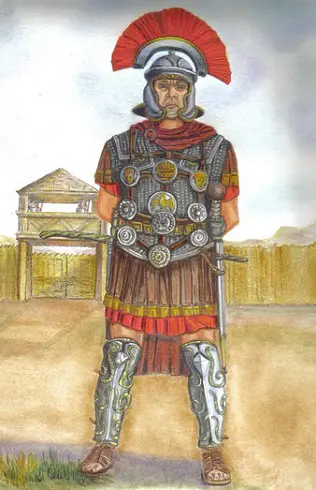
Rome had the best military in the world as the military was a highly organized institution. The Roman army had advanced equipment and tactics with the prudent division of soldiers.
The Armies were divided systematically such that the experiences, skills, strengths, and position of the recruits were reflected with minute.
The legion was the basic unit for division. There were 30 legions, and each legion had about 4500 to 5500 men.
It was subdivided into ten units known as cohorts, and each cohort was divided into six centuries. Each century had about 80 men commanded by a centurion. It had a tesserarius, a signifier, a cornice and an optio.
The first cohort had about 800 men and only five centuries. The remaining nine of the cohorts had 480 soldiers.
Ten tents were given to one cohort and eight soldiers at each cohort. Most of the extra men in the first cohort were either blacksmiths or builders.
The primus pilus, or “first spear” was the highest-ranking centurion in the legion. There was 120 cavalry who were messengers and scouts.
Each soldier had their specific functioning and role to play on the battlefield.
Recruit of Roman Army
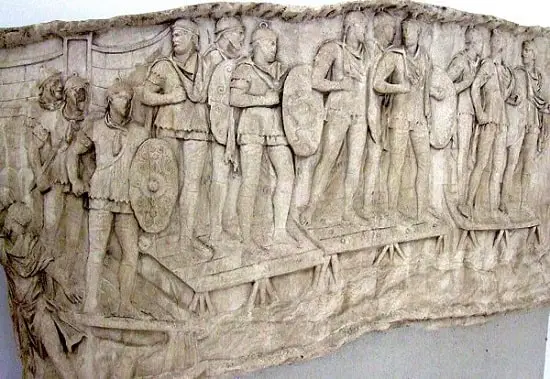
The selection of the Roman Army was through the intense procedure, and men had to be physically and mentally ready to give their service to the nation.
Apart from the division of soldiers in the battleground, the soldiers were classified into Legionaries and Auxiliaries.
Legionaries had to be Roman Citizens over 17 years of age. They had to sign up for 25 years of service in the Roman Army. They were not allowed to get married in the initial stages, but later, it was reformed.
They were permitted to retire only after their service and were given some land or a pension big enough to buy some land.
Whereas, Auxiliaries were not Roman Citizens and were men from countries the Romans had conquered or basically from the foreign land.
They were recruited to the Roman Army to prevent them from rebelling and increase the military force. Their wage was a lot less than that of Legionaries.
They were kept on the front line, which had the most danger. After their retirement as compensation, the government provided them with Roman Citizenship.
Training and Discipline of the Roman Army
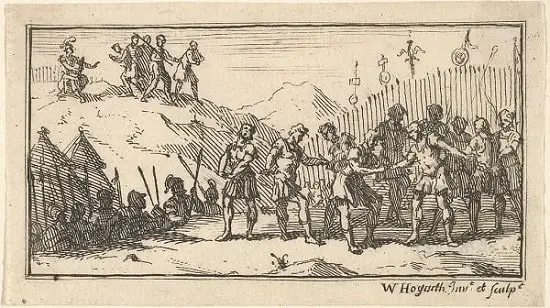
Roman Soldiers were well trained under pressurizing conditions. They could march 20 miles a day with their heavy equipment.
They had to build bridges, swim, and even fight after long days of the journey.
Camps with a ditch and a wall of wooden stakes were made after a long day of march and still redo this task all over again the next day.
They spent most of their time training for battles and were supposed to follow orders. They had to be in their best form of discipline and to keep them intrigued.
‘Decimation’ was used as a form of military discipline to punish units or large groups guilty of capital offenses such as mutiny or desertion. Senior commanders specifically used it.
The earliest decimation took place in 471 BCE. During the battles against Volsci, the Roman Armies were punished.
A cohort was selected for punishment and divided into groups of ten.
The soldier on whom the sortition fell was executed by his nine comrades, and the remaining were given barley instead of wheat for a few days.
The structure and Battle Tactics of the Roman Army
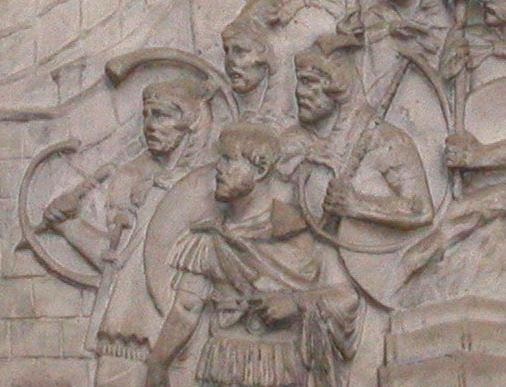
The soldiers were taught to use their weapons and military tactics efficiently through vigorous training.
The Roman Armies developed innovative techniques and instruments that hindered other nations from winning over Rome.
There were four weapons that a legionary carried into battle. Each army had two javelins to fling at the enemy from a distance.
Gladius, a short sword, was used for close-up fighting, whereas a long rectangular shield was used for protection. Each legionary had a dagger or pugio.
All the weapons were heavy, and they were trained to use them for war tactics.
The Roman Army was adaptable, and its approach was quite different from others. Some of the war tactics are described further.
The formation of the triple line was based on military rank. The principles and then the trial followed the most petite experienced men at the front.
In front of all were the velites known as the newest and poorest recruits to attack the approaching enemy with javelins.
One of the most significant Roman Inventions, the Corvus, which means “crow” in Latin, was used as a boarding device to access enemy ships.
Another famous tactic was the Greek fire, which could burn when floating on water.
The Wedge or Flying V was a cluster created by bodies moving forward in a triangular formation. The point was made up of lines of the best troops available.
The frontline strategy, the testudo, was a shield wall formation used as a defensive strategy that allowed the Roman foot soldiers to protect themselves against missiles and enemy bowmen.
Adding up to another fearsome combination of the Roman ballista and the catapult, Carroballista was used to fire heavy bolts using a system of stored spring energy for maximum power.
Apart from using different techniques to avoid enemies, they were also very keen on medical treatment on the battlefield and highways and roads.
The Roman Army had a dedicated number of medical professionals who would take surgeries by disinfecting the instruments with hot water at that time. They also made sure that soldiers had a good diet.
There was systematic construction of roads by skilled engineers.
During the first era of the Roman Empire, 30 military highways led out of the capital city, and almost 400 roads connected with them.
In the way, they also made houses that would help soldiers to build connections and share secret information.
Occurrence of the Mutiny in the Roman Army
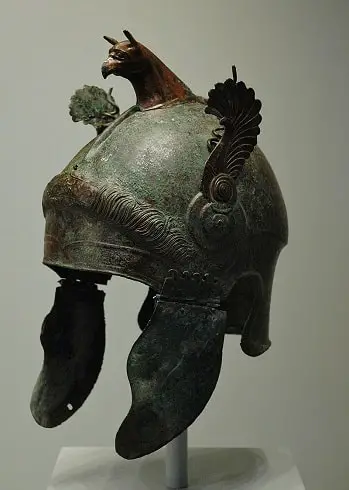
The Roman Military was one of the fierce and disciplined armies. They were well trained and knew weapons and battle tactics.
They were best in what they did; it doesn’t denote that the armies were satisfied and didn’t revolt against the emperor.
The primary reason behind both the rising and fall of Roman Civilization was the Roman Army.
Life in the Roman Army was not easy, and there have been many instances where the Mutiny had occurred. A significant mutiny from the period of the First Samnite War is related to the year 342 B.C.
After winning over the Samnites, the troops were placed in winter quarters in Campania, where the mutiny broke over soldiers intending to take over the land and wealth of the Campanians.
Later, consuls brought them into the forum and beheaded them. The most severe mutiny in Rome’s early history was the Second Punic War of 206 B.C. in Spain.
At that time, Military troops took advantage of then consul Cornelius Scipio’s reported illness and made a pretext of their overdue pay to mutiny.
Scipio later reproved the revolutionary army and offered pardon, but the thirty-five leaders were beheaded without mercy.
Even after the Punic Wars, the old and strict military discipline remained unaltered.
The generals had the authority to behead any man serving in his camps, due to which many soldiers were dissatisfied with your generals.
In 89 B.C., the consul, L. Porcius Cato, escaped from the mutinous troop. He charged his troops with disrespect and insubordination. After that, they looked around for stones to revolt against him.
There had been a revolt against the commanders or emperors by the soldiers repeatedly. Even though Caesar’s army was the most dedicated military, history records couldn’t escape this.
For instance, at Placentia in 49 B.C, Caesar had twelve soldiers of the ninth legion executed for insubordination.
Conclusion
The life of the Ancient Roman Army evolved with time and had gone through much turmoil.
The discipline, war tactics, and weapons are still used today for reference. They were highly discreet and innovative for their time.
The fall of the Ancient Roman Army took place when the Roman Empire was sacked down by the Germanic leader Odoacer. Emperor Romulus Augustulus was the last king to rule till 476 AD.
The weakening of legion and power-hungry soldiers were the primary reason behind its fall.
The military of Ancient Rome has influenced most of the political and sociological aspects of Roman Civilization. It allowed them to dominate most parts of the Mediterranean world and beyond for centuries.
The contribution of the Ancient Roman Army has been exemplary and has significance in world history.
